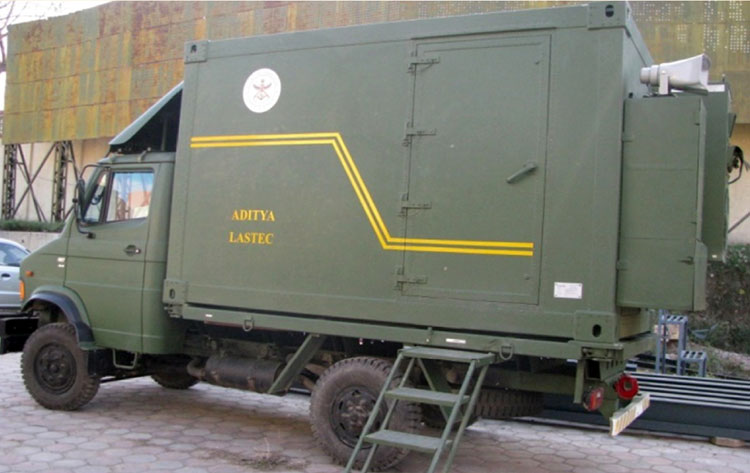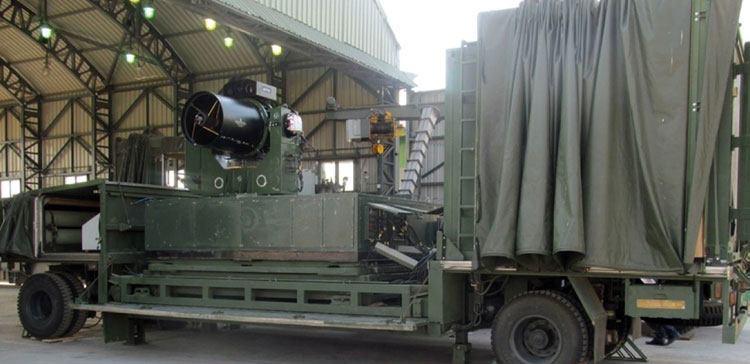INDIAN ARMED FORCES CHIEFS ON OUR RELENTLESS AND FOCUSED PUBLISHING EFFORTS

The insightful articles, inspiring narrations and analytical perspectives presented by the Editorial Team, establish an alluring connect with the reader. My compliments and best wishes to SP Guide Publications.

"Over the past 60 years, the growth of SP Guide Publications has mirrored the rising stature of Indian Navy. Its well-researched and informative magazines on Defence and Aerospace sector have served to shape an educated opinion of our military personnel, policy makers and the public alike. I wish SP's Publication team continued success, fair winds and following seas in all future endeavour!"

Since, its inception in 1964, SP Guide Publications has consistently demonstrated commitment to high-quality journalism in the aerospace and defence sectors, earning a well-deserved reputation as Asia's largest media house in this domain. I wish SP Guide Publications continued success in its pursuit of excellence.
- Operation Sindoor: Resolute yet Restrained
- India’s Operation Sindoor Sends a Clear Message to Terror and the World – ‘ZERO TOLERANCE’
- Japan and India set forth a defence cooperation consultancy framework, talks on tank and jet engines
- Terrorist Attack in Pahalgam in Kashmir: Unfolding a long surgical war against PAK
- Lt General Pratik Sharma takes over Command of Indian Army's Northern Command
The Electro-Magnetic Pulse (EMP) Threat
 |
The Author is Former Director General of Information Systems and A Special Forces Veteran, Indian Army |

On August 1, 2020, a post on Twitter appeared purportedly from Global Times of China quoting Qien Huayo source that read, “Chinese Helicopter shot down by unknown Indian EMP burst, 7 killed”. It is not known if the tweet was genuine or fake but it was deleted after a short time. There were no comments from the Indian side. EMP weapons have the advantage of scalability from microwaves that enormously heat the skin without injury, to high-power EMP weapons that can destroy enemy ballistic missile in flight. The main advantage of EMP weapons lies in destroying enemy’s ability to fight without killing or wounding, less casualties caused by downed weapon platforms or aircraft due to EMP attack.
In June 2020, America’s EMP Task Force on National and Homeland Security released a report saying China has super-EMP weapons, can protect itself against EMP attack and has developed protocols to conduct a first-strike EMP attack even as they deny they would ever do so. The study goes on to say that while China has the most active ballistic missile development programme in the world incorporating stolen US technology, it has built a network of satellites, high-speed missiles and super-EMP weapons that could melt down US electrical grid frying critical communications and even take out ability of US aircraft carrier groups to respond. Nuclear reactors are immune to EMP attack but high voltage control cables and large transformers that control the power grid are particularly vulnerable. Transformers weigh 400 tonnes, take two years to build and cost $7 million apiece, so ready replacements are not available to restore power. EMP weapons have devastating effects on whatever area they envelop, from permanently disabling satellites in orbit to frying smart-phones and other electronics with no possibility of repair, in addition to destroying everything from a single smart phone to an entire continent’s critical infrastructure permanently and without possibility of repair.
High-power EMP weapons also offer stealth; their shrinking size and growing power make it difficult to identify the attacker. They are also the perfect weapon for terrorists and saboteurs because they can strike silently, invisibly, and with total devastation. Multiple US military weapon platforms including Stryker combat vehicles and unmanned aerial vehicles (UAVs) have EMP capability. Military researchers around the world have been studying EMP as a weapon for decades. The most successful application has been in lasers, with the development of small high-power systems. Advances have also been made in microwave weapons and non-nuclear EMP weapons. US, Russia and China have all been engaged in developing a wide range of lasers including solid-state lasers and free-electron lasers. Ongoing research covers military operations at sea, on land, in the air, and in space where EMP weapons will be able to disable aircraft carrier battle group in seconds; destroy the electronics of land-based aircraft before they can launch; knock out vital communications, surveillance, weather, and command and control spacecraft without warning; and leave ground forces blind and cutoff from each other with the attacker retaining cutting-edge military capabilities.

Indian policy makers and R&D must be taking notes of these developments. Avinash Chandra, then DRDO Chief and Advisor to the Defence Minister had told media in 2014 that DRDO was developing an E-bomb that would emit electromagnetic shock waves to destroy electronic circuits and communication networks of enemy forces. The E-bomb, he said, would give an option to the military as the bomb can target the enemy’s mobile targets, air defence systems, mobile or static radars, naval vessels with communication systems and even ill-shielded communication or electronic systems at a military base, adding, “So next time there is a Kargil or a LoC violation, you may not hear gunshots or mortar shells, because the electromagnetic bomb will throw life out of gear”. Open source information of 2017 indicated that India’s KALI 5000 project, though basically a big electron accelerator, aims at being a Directed Energy Weapon (DEW) – types built only in the US, Russia, China and India though UK was also in early phases of building such a weapon. According to Indian scientists involved in the KALI 5000 project, it could be better than laser weapons, because lasers drill holes which take time while KALI 5000 will shoot high-energy electron beams which damage the sensors, particularly of enemy aircraft and naval warships instantaneously. DRDO's Laser Science & Tech Centre (LASTEC) has been developing ADITYA - a vehicle mounted gas dynamic laser-based DEW system as technology demonstrator and a 25-kilowatt laser system to hit a missile in terminal phase at a distance of 10-15 km. DRDO identifies DEWs, along with space security, cyber-security and hypersonic vehicles as future projects. EMP may be released either naturally from things like extreme solar geomagnetic disturbances or man-made like a large thermonuclear detonation or a cyber-attack.
The important issue is that if EMP weapons are coordinated with physical attacks then the situation can become critical for the defender. Though not EMP weapon, the Indian Armed Forces have pushed for arming the 90 odd Israeli Heron UAVs with laser-guided bombs, precision-guided munitions and anti-tank missiles for taking out enemy positions and armoured vehicles amid the standoff with China in Eastern Ladakh. The proposal, Project Cheetah, has been revived by the armed forces after being pending for a “long time” and is expected to cost over 3,500 crores. Now a high-powered committee has been set up to look into the issue – for weaponry we should have had at least a decade back. How much time it will now take before the Armed Forces actually can field these is anybody’s guess. India needs to optimise the public and private sectors together to accelerate development of offensive and defensive electromagnetic technologies. Finally, two issues with respect to EMP weapons need to be acknowledged by the world: one, a small high-powered EMP weapon can be hidden by China in a container and fired from any port, and; two, whoever takes the initiative to fire the EMP weapon(s) first will have a gigantic advantage. Given the ruthlessness that China has demonstrated in launching the biological attack through the China Virus, Xi Jinping will have no compunctions in using EMP weapons first in his race for world domination. Incidentally, PLA has been exercising in situations of total communication blackout.





